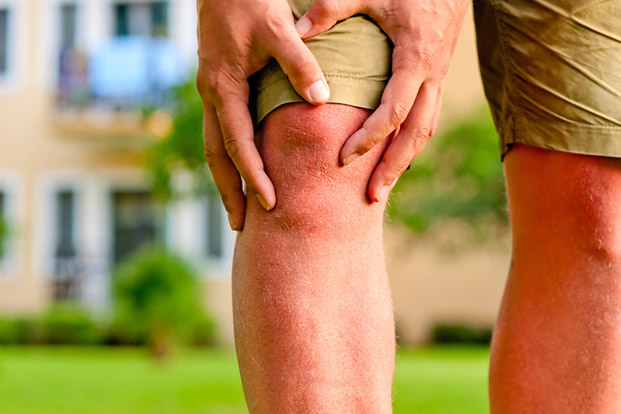Aging And Joint Pain
Apr 19, 2022
Our musculoskeletal system is made up of bones, muscles, and joints. The bones attach to each other at a joint. The ends of each bone is covered by a lining of smooth, protective cartilage . These cartilages act as a cushion between bones and protect it from rubbing against each other. Joints let us move our body and support our weight as we go through life. But, as we get older, our cartilage may start to degenerate. This leads to eburnation of cartilage and lead to exposure of the underlying nerve endings. When these nerve endings rub against each other they cause pain in the joints. The older we get, the more common it is to experience mild soreness or aching when you stand, climb stairs, or exercise. The body does not recover as quickly as it did in younger years.
Reasons of Joint Pain:
There are many potential causes of joint pain in older patients. The most likely etiology is OA. OA (Osteoarthritis) is mainly a degenerative, non inflammatory condition. However, the differential diagnosis includes conditions which should not be missed such as septic arthritis and inflammatory disease. Some of these may occur in old age as well. The pattern of joint involvement points to the diagnosis.
Bilateral symmetrical small joint pain, swelling and stiffness should arouse the suspicion of Rheumatoid Arthritis (RA). The wrist and knee are commonly affected by pseudo gout and the first metatarsophalangeal joint or knee joint involvement may represent gout. Stiffness in the shoulder and hip girdles, worse in the morning, suggests polymyalgia rheumatica.
In straightforward cases of OA no specific investigations are required. If doubt exists, however, tests may be necessary including CBC, ESR and CRP, uric acid for suspected gout and X-rays of the affected joints especially following trauma, or pseudogout.
Apart from these one of the main cause of joint pain in our aging population is Osteoporosis. As our age progresses our bone tends to lose their strength. The bone density becomes weak and apart from fractures and back pain they cause multiple joint pain commonly. They have been termed as ‘Silent Killer’.

Management of Joint Pain:
Patients with OA should be offered conservative management initially which includes strengthening exercises and aerobic fitness training. If the patient is overweight, weight loss is critical, especially in OA of the knee. Most importantly we must restrict our geriatric population to be dependent on medicines to cure OA, as these disorders cannot be cured by medicines and excessive use of pain killers may lead to other severe systemic issues. If conservative management fails and pain is severe enough to restrict their daily life joint replacement should be considered.
Another common cause is Elderly onset RA. Disease-modifying anti-rheumatic drugs – DMARD therapy should be used according to disease severity, as in younger onset RA. The current approach is for early, intensive intervention with combination therapy. Corticosteroids may be very effective in the elderly, however, prolonged use and/or high dosage may lead to marked toxicity especially osteoporosis and diabetes.
For osteoporosis approach should be to quantify their bone density and start drug accordingly. Apart from these daily exercises, healthy diet, exposure to sunlight and Vitamin D supplementation is needed.
Geriatric populations are our greatest treasure and we must protect them from the venom of joint pain.









